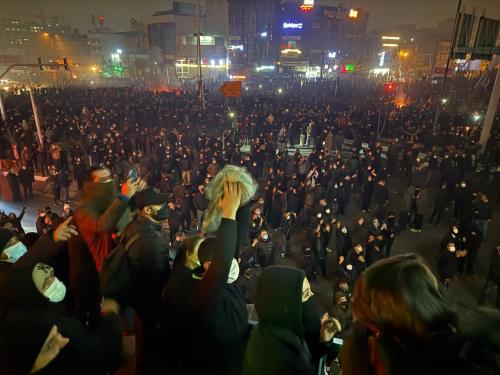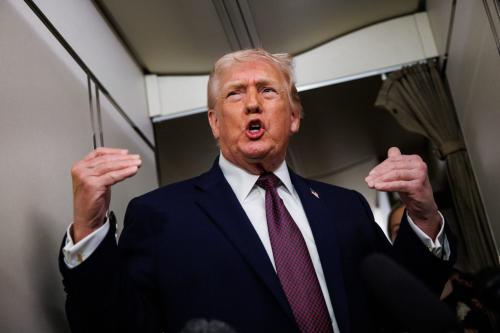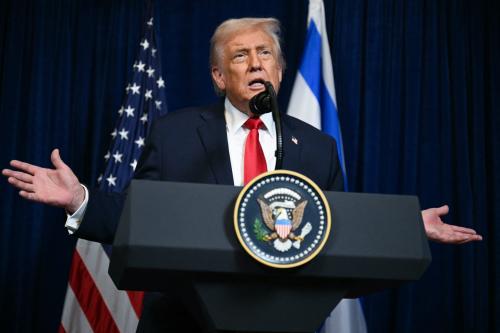The fight over Trade Promotion Authority (TPA) for the Trans-Pacific Partnership (TPP) is now fully engaged in the Congress. The president and his team have been pushing hard on the Congress to give him the authority he needs to conclude the TPP deal that he regards as critical for American jobs and for American standing in the world.
The president’s setback in the Senate on TPA today demonstrates yet again that trade is an issue with brutal domestic politics. And unlike almost any other issue you can name, the most essential political dynamic is not Democrat versus Republican, it is president versus Congress. Executives nearly always favor free trade deals; most legislators are much more skeptical, often hostile. Of course, there are many exceptions, particularly among legislators whose districts export agricultural products or don’t have many import-competing industries. But the broad dynamic is about contending economic interests within political parties, not partisan politics.
The reasons are fairly clear: Presidents see the overall positive impact on the national economy of increasing trade. They also see that concluding trade deals improves bilateral relations and U.S. standing in the world. Senators and representatives fear the concentrated negative impact of economic disruption on specific employers in their districts. As Maine Senator Angus King put it about sneaker factories in his state that might move to Asia under a trade deal, “I’ve been to those New Balance factories. I’ve looked those people in the eye. … That’s certainly an influence.”
Trade is most difficult within the Democratic Party. The two most consequential trade agreements of the last two decades (the North American Free Trade Agreement, or NAFTA, and TPP) have been characterized by a Democratic president quarreling with the congressional wing of his own party. TPP has the added twist that the rise of the Tea Party movement means that the Republican Party is less cohesive on trade than it was during the NAFTA debates.
At Brookings, we like to think big and our jobs don’t require the support of specific Congressional districts, so we tend to side with presidents on trade deals. Of course, there is broad recognition that trade liberalization creates winners and losers, but the overall economic benefits outweigh the cost. This implies a focus on creating a safety net for displaced workers that can help make up for the losses, but broad support for the deal. Indeed, while Brookings as a whole never takes institutional positions, there is considerably more agreement among the individual Brookings experts on the value of trade deals such as TPP than on most issues.
Reflecting this consensus, Mireya Solis, a senior fellow in Foreign Policy, laid out the geopolitical rationale for TPA/TPP in a blog post back in March. Miriam Sapiro, former deputy U.S. trade representative and a nonresident senior fellow in the Global Economy and Development program, wrote a piece advocating TPA on economic grounds in April.
But despite the logical strength of these arguments and the basic agreement with the president’s policy that they represent, there is a lot of anxiety about the strategy the president is pursuing to pass the deal through Congress. Two issues are of particular concern.
First, as Senior Fellow Kenneth Lieberthal puts it:
The White House has employed a national security rationale for TPP along the lines of “if we do not write the rules for trade in Asia then China will.” That is a serious political mistake. The idea is to get recalcitrant Democrats on the Hill to vote in favor of TPA/TPP. But senators and representatives vote on trade and investment agreements overwhelmingly based on the impact in their own constituency, not on national security grounds. The only really effective way to win over votes is to do intensive retail politics (with ample direct presidential engagement) to cut local deals to win individual members’ support. Members are highly unlikely to change their votes because of an abstract argument about who will write the rules in Asia.
This argument doesn’t help conclude the TPP deal, either. Nearly all countries in Asia other than China want the United States to have their back on security issues as China becomes more powerful and assertive, but that is not true when it comes to economics and trade, where China is already by far the biggest player in the region. Every significant Asian country negotiating the TPP agreement does more trade with China than with any other country, including the United States, and each sees participation in China’s ongoing economic growth as a serious factor in its own economic future. The White House strategists may not be taking this important difference between security and economic/trade issues sufficiently to heart—the Asian Infrastructure Investment Bank (AIIB) debacle should have been a serious warning, but evidently the lesson is not yet fully absorbed.
In short, framing the debate as “who shapes the future economic and trade rules in Asia” is likely to end up being ineffective in terms of Congressional votes and to make the United States appear to be seeking exactly what our friends and allies in the region want to avoid—positioning the TPP as a choice between siding with the United States and siding with China on economic and trade issues in the region.
Second, Senior Fellow Richard Bush worries about the long-term impact of this political strategy on China:
In addition to the “short game” of getting TPA and finishing the first round of TPP, there is also a “long game.” The long game is creating a high-standard new economic order that will create incentives for China to come in at a second or third round and disincentives for it to stay out.
If it is well-designed, Chinese leaders will eventually want to join TPP. Many of the disciplines in TPP are exactly the types of reforms that Chinese leaders must engineer domestically to bring about an economy appropriate for the level of development China has achieved. Membership in TPP, therefore, has the potential to give those reformist leaders leverage to better engineer reform.
At the same time, it will be difficult for them to stay out of a high-standard agreement. Once the first round of TPP is concluded, it will be easy for South Korea to come in, since it already did most of the work in its bilateral free trade agreement with the United States. A trade and investment bloc that includes the United States, Japan, and South Korea (all major trading partners of China) is a club that China will need to join.
If, in order to secure Congressional approval, the administration fails to create these types of incentives and disincentives for China, one of the principal reasons to have TPP will have been lost.
All of this demonstrates that the main issue for our experts is how to square the extremely difficult domestic politics of the issue with the TPP’s desirable geopolitical ambitions and economic effects. And it reflects a general worry at Brookings and beyond, that domestic political disputes in the United States are increasingly hobbling American efforts to respond to the dramatic geopolitical challenges of the day.
Author’s Note: David Dollar, Mireya Solis, Ken Lieberthal and Richard Bush all contributed important elements to this piece. But the responsibility for any errors or outrageous statements remains with the author.
The Brookings Institution is committed to quality, independence, and impact.
We are supported by a diverse array of funders. In line with our values and policies, each Brookings publication represents the sole views of its author(s).




Commentary
Why do the president and Congress fight about trade?
May 12, 2015